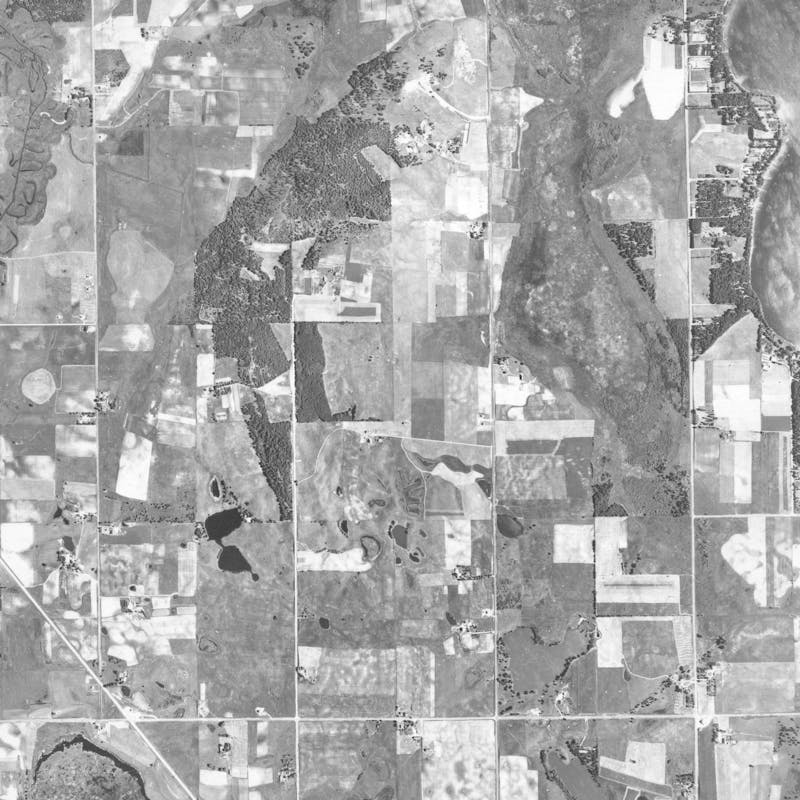How a Twin Cities ammunition factory dominated by women helped U.S. win WWII
Listen and subscribe to our podcast: Via Apple Podcasts | Spotify | Stitcher
Billions of bullets flowed from the factory buildings that once occupied a large swath of northern Ramsey County, back when the Greatest Generation put all hands on deck to defeat America's enemies in World War II.
Debate is simmering again over the future of the Twin Cities Army Ammunition Plant in Arden Hills, one of the region's biggest development opportunities. Potential new housing would represent the rebirth of a long-dormant site that — for a period — held vital importance to the state and the country.
Once dubbed a "great industrial city," the plant pumped out mountains of .30- and .50-caliber cartridges during the war. About 25,000 people worked there around-the-clock at its peak, more than half of them women who became factory workers while men fought overseas.
The empty area has been on the mind of Jordan resident Craig Swanson, who skirts around the nearly 2,500-acre property — visible from Interstate 35W and Lexington Avenue — when he visits a friend in the area.
Swanson asked Curious Minnesota, the Star Tribune's reader-powered reporting project, about the history and current status of the site.
"The thing I found the most striking about it is it's bordered by barbed wire fence," said Swanson, a software engineer.
The area has undergone radical transformation in the past century. Once sleepy farmland on the outskirts of St. Paul, the site was filled with buildings for several decades until they were cleared to make way for development in the 2010s. But its wartime legacy lives on today.
"It was so important for the war effort, for employment and for the women's movement," said historian Jacci Krebsbach, president of the Shoreview Historical Society.
'Arsenals of democracy'
In summer 1941, the federal government began scouting locations for ammunition production before the United States had officially joined the war. An area of what was then Mounds View Township was considered a contender because the farmland there was of marginal quality, Krebsbach said. Its location close to the rail hub of St. Paul was also appealing.
The government purchased 2,500 acres and within weeks, fenced it and removed 75 families living on the site, Krebsbach said. They also closed down two schools and multiple businesses. Landowners were paid for their property.
Krebsbach, who interviewed surviving family members who had lived on the site, said people were emotional at their abrupt removal and confused since the country was not yet in the war.
"It is regrettable that the mad ambitions of an autocrat abroad must force such changes as we witness at New Brighton," the Minneapolis Tribune editorialized in 1941, referring to the plant's mailing address city. "[B]ut at least Hitler is not clearing the site for us, as a concentration camp, or razing its homes in cooperation with the luftwaffe."
The federal government contracted Federal Cartridge Corporation of Anoka, a sporting ammunition manufacturer, to operate the facility.
"Here in this plant will be loaded shells to be fired in defense of America. You are the builders of the arsenals of democracy," Col. W.D. Styer said during a tour of the construction in 1941.
By February 1942, the first factory was constructed and workers were producing ammunition for the war including rifle and machine gun rounds. Known as the Twin Cities Ordnance Plant, it quickly grew into a sprawling campus with its own fire department, hospital, bus system, newspaper and intramural sports leagues.
A diverse workforce
Mobile home parks were established around the periphery of the site to house the influx of workers who came from across the region. New bus routes to the plant helped accommodate the flow of commuters.
More than half the laborers were women, referred to as WOWs — women ordnance workers.
"One woman said, 'This was the beginning of the women's movement, but we didn't know it at the time,' " said Krebsbach, who interviewed former workers.
News accounts often patronizingly described women hanging up their aprons to operate machines and complete other industrial jobs.
"A former school teacher is an expert gunner on the plant's accuracy range," according to a 1943 Minneapolis Tribune article. "Housewives who never mended a pot or a pan are now applying hot solder to ammunition chests with dexterity."
Many women requested the night shift so they could care for their children and families during the day, according to news accounts. Yet there were still inequities.
"Men made more money," Krebsbach said.
Workers nonetheless described a strong sense of purpose and patriotism, fueled by military and national leaders. They were helping their husbands, boyfriends and brothers win the war.
The plant was also racially integrated with Black workers holding supervisory positions, according to the Minnesota Historical Society. Leadership at Federal Cartridge would not racially segregate employees.
President Franklin D. Roosevelt toured the sprawling campus in September 1942 to rally the war effort. Roosevelt praised the diverse workforce, according to news accounts of the visit.
'Can't wait to get it going'
As quickly as it sprang up, the site was mothballed after the Allies were victorious in 1945. It was reactivated, at a smaller scale, to produce ammunition for the Korean and Vietnam wars. The property was also a target of protesters during the Vietnam War.
By the late 1970s and early 1980s, state and federal authorities began to acknowledge and address the pollution caused by decades of heavy manufacturing and chemical disposal at the site.
It was declared a federal Superfund site in 1983 for soil, sediments, groundwater and surface water contamination. After years of cleanup, the soil and surface water were delisted in 2019. But groundwater contamination remains and will continue to be treated through an existing groundwater cleanup system.
Much of the site still remains in the hands of the military. The Arden Hills Army Training Site occupies 1,500 acres — more than half of the land.
It is a training site for the Minnesota National Guard and Minnesota Department of Military Affairs. It also serves as a local training area for law enforcement, civilian agencies, and environmental and wildlife conservation programs, said Army Lt. Col. Kristen Augé, Minnesota National Guard's state public affairs officer.
"The barbed wire along Lexington Avenue secures and identifies the boundaries of the AHATS area," Auge explained in an email. "The regulatory prescribed wire protects our training areas and equipment, such as military vehicles located outdoors."
Ramsey County purchased more than 400 acres on the western portion of the property from the federal government in 2012, with ambitious plans to redevelop it into housing, businesses and retail. That land, roughly equivalent to the size of downtown St. Paul, is the largest shovel-ready tract in Ramsey County.
The county has spent more than $40 million on buying the property and additional cleanup. Disagreements with the city of Arden Hills around the number of homes to be built on the site has held up that development. A newly elected council majority has promised to move the project forward, with the goal of helping alleviate the region's housing shortage.
"We think it's a valuable property and we can't wait to get it going," said new Arden Hills City Council Member Tom Fabel.
Staff writer Eric Roper contributed to this report.
If you'd like to submit a Curious Minnesota question, fill out the form below:
Read more Curious Minnesota stories:
Was Minnesota home to nuclear missiles during the Cold War?
Did German prisoners of war really work on Minnesota farms during World War II?
Was Charles Lindbergh a Nazi sympathizer?
What's the story behind Minnesota's military training ground, Camp Ripley?
Was Minnesota once home to U.S. government-sponsored hemp farms?
Why do military cargo planes regularly fly in pairs over the Twin Cities?









